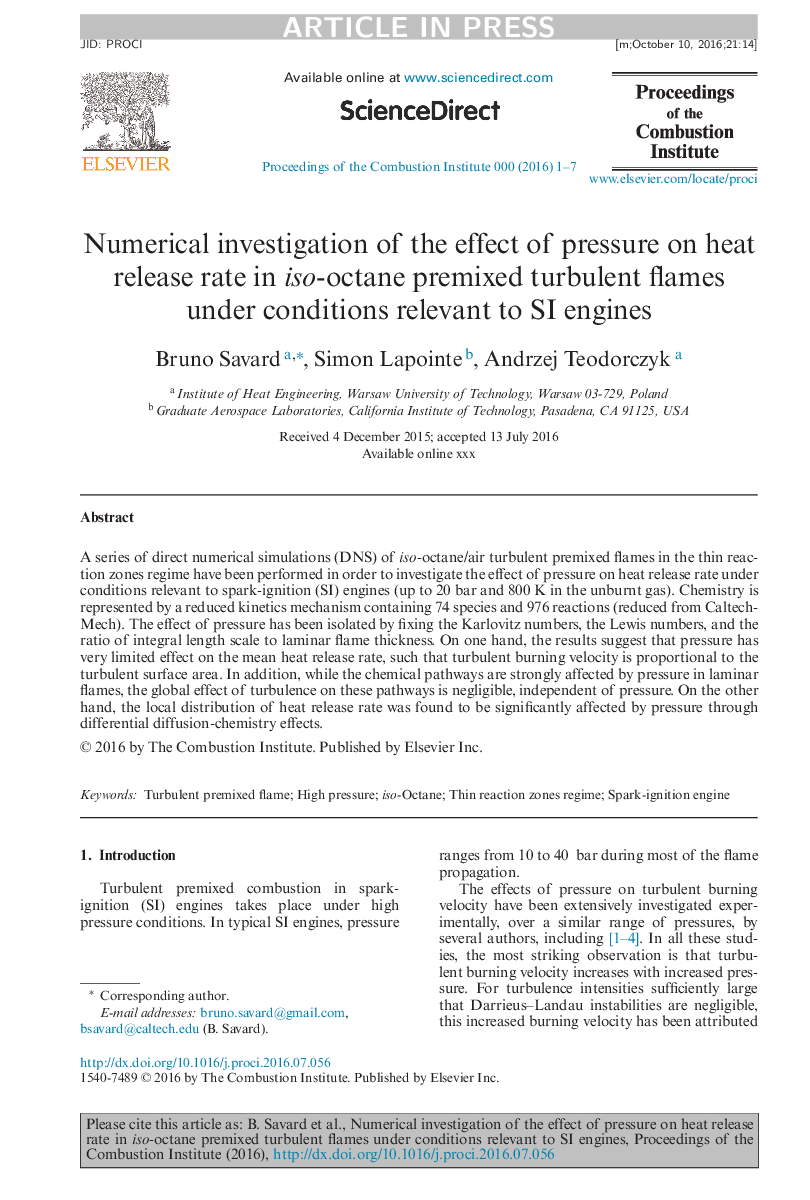| Article ID | Journal | Published Year | Pages | File Type |
|---|---|---|---|---|
| 4915409 | Proceedings of the Combustion Institute | 2017 | 7 Pages |
Abstract
A series of direct numerical simulations (DNS) of iso-octane/air turbulent premixed flames in the thin reaction zones regime have been performed in order to investigate the effect of pressure on heat release rate under conditions relevant to spark-ignition (SI) engines (up to 20Â bar and 800Â K in the unburnt gas). Chemistry is represented by a reduced kinetics mechanism containing 74 species and 976 reactions (reduced from CaltechMech). The effect of pressure has been isolated by fixing the Karlovitz numbers, the Lewis numbers, and the ratio of integral length scale to laminar flame thickness. On one hand, the results suggest that pressure has very limited effect on the mean heat release rate, such that turbulent burning velocity is proportional to the turbulent surface area. In addition, while the chemical pathways are strongly affected by pressure in laminar flames, the global effect of turbulence on these pathways is negligible, independent of pressure. On the other hand, the local distribution of heat release rate was found to be significantly affected by pressure through differential diffusion-chemistry effects.
Related Topics
Physical Sciences and Engineering
Chemical Engineering
Chemical Engineering (General)
Authors
Bruno Savard, Simon Lapointe, Andrzej Teodorczyk,
